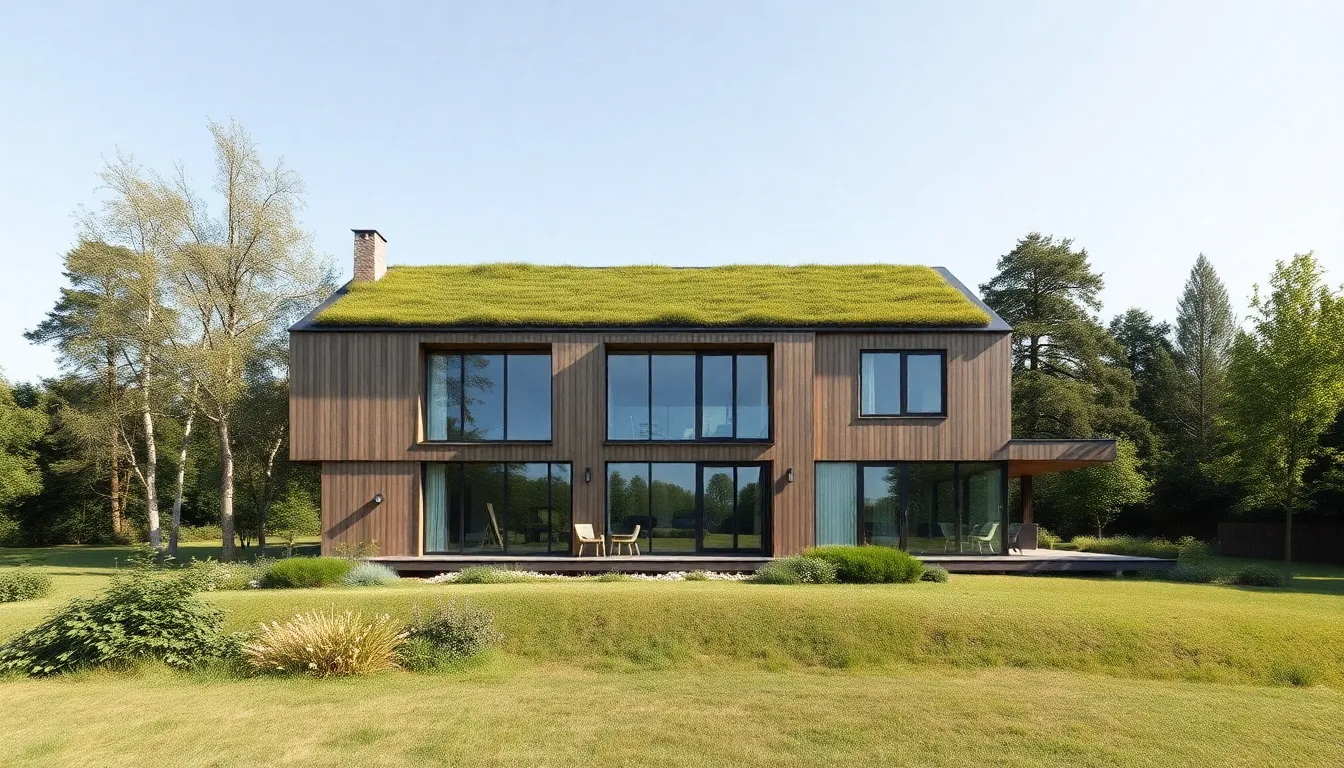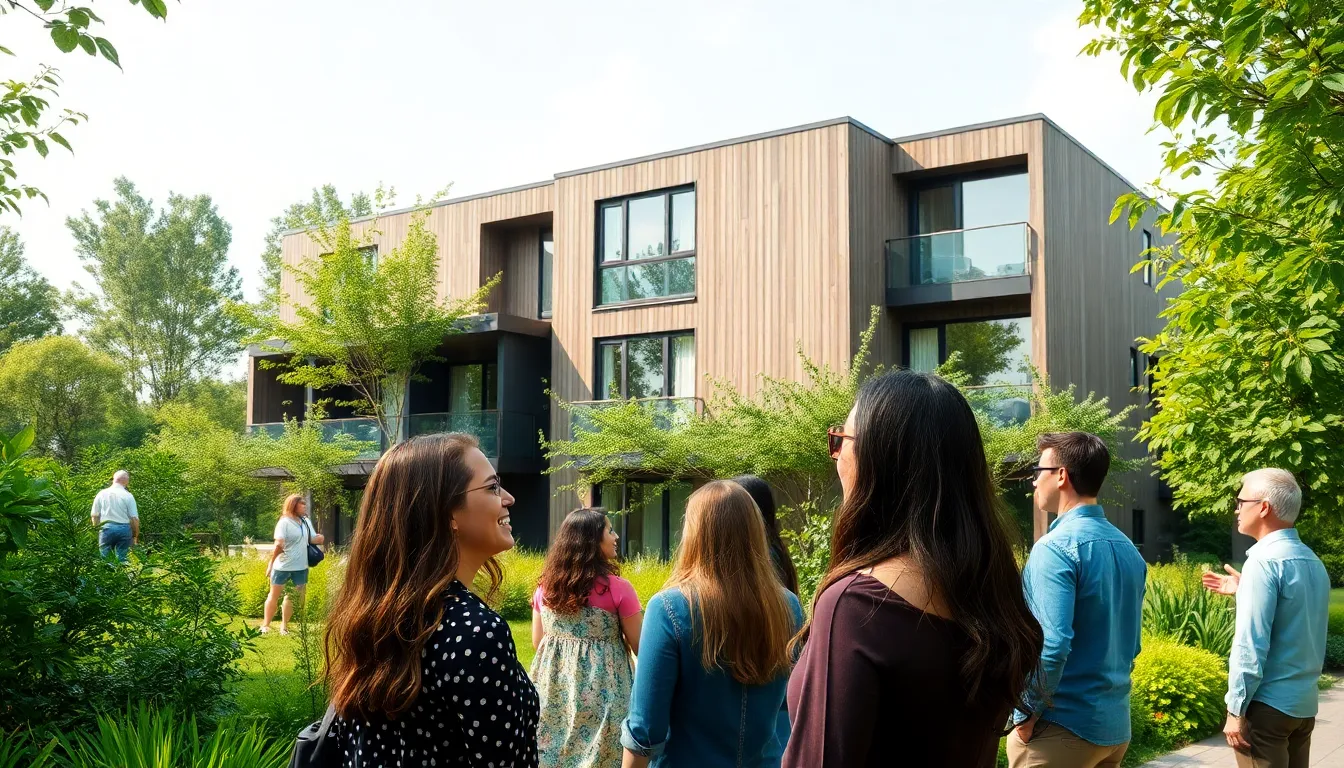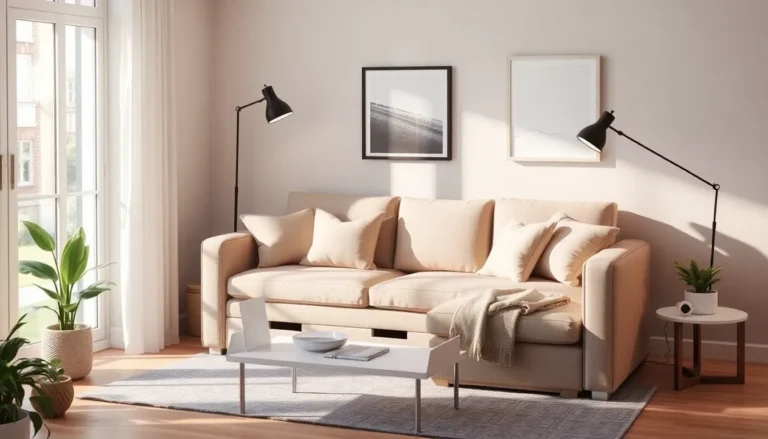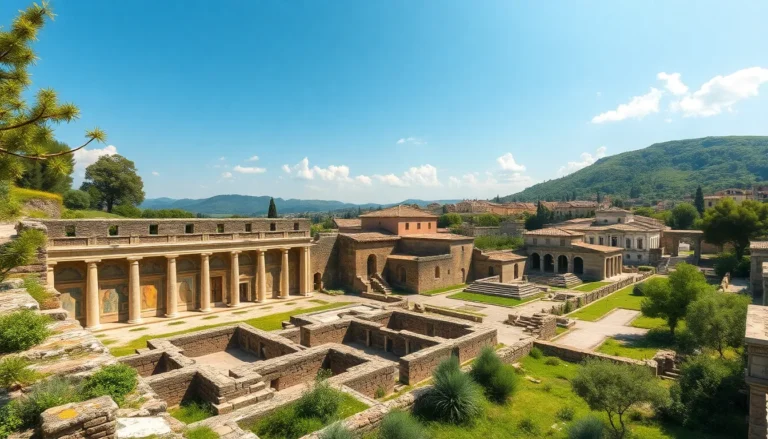Danish architecture isn’t just about buildings; it’s a lifestyle wrapped in clean lines and clever design. Imagine a world where functionality meets beauty, and every structure tells a story. From the iconic curves of the Sydney Opera House to the minimalist charm of Copenhagen’s residential neighborhoods, Danish architecture has a flair for making the ordinary extraordinary.
But wait, it gets better. This isn’t just a collection of pretty facades; it’s a philosophy that embraces sustainability, innovation, and a sprinkle of hygge. So, whether you’re an architecture aficionado or just someone who appreciates a good Instagram backdrop, diving into the world of Danish design will leave you inspired and maybe even a little jealous of those lucky Danes. Get ready to explore a realm where every corner is crafted with purpose and every space invites you to linger a little longer.
Table of Contents
ToggleHistory Of Danish Architecture
Danish architecture has evolved through various historical periods, marked by distinct influences and innovations. Understanding its journey reveals how cultural, social, and environmental factors shaped its unique character.
Early Influences
Danish architecture’s roots trace back to the Viking Age, where utilitarian structures emphasized functionality. The Gothic period introduced stone cathedrals, showcasing intricate details and verticality. Renaissance architecture, influenced by classical styles, brought symmetry and proportion to buildings. Notable examples include the Round Tower in Copenhagen, combining an elegant spiral design with practicality. In the 18th and 19th centuries, Neoclassicism emerged, promoting grandeur through expansive facades and colonnades, as seen in the Royal Danish Theatre. Each era laid the groundwork for a design language that marries utility and artistry.
Modern Developments
The 20th century marked a significant shift toward modernism in Danish architecture. Architects such as Arne Jacobsen and Jørn Utzon pioneered designs focused on simplicity and integration with nature. The Sydney Opera House, globally recognized, exemplifies organic forms that harmonize with the environment. Post-war developments emphasized functionalism, prioritizing dwellings that embodied comfort and community, leading to designs like the suburb of Vallensbæk. Today, architects continue to innovate, merging sustainable practices with contemporary aesthetics, as seen in the 8 House in Copenhagen. This ongoing evolution highlights Danish architecture’s commitment to balancing beauty, usability, and environmental responsibility.
Key Characteristics Of Danish Architecture

Danish architecture features distinct characteristics that embody simplicity, functionality, and harmony with the environment. Two key aspects highlight this architectural style: the use of materials and integration with nature.
Use Of Materials
Danish architecture emphasizes quality materials like wood, brick, and concrete. Architects prioritize local sourcing, ensuring sustainability and a reduced carbon footprint. Examples abound where stone and timber dominate, creating warmth and texture. Designers often choose materials that age gracefully, allowing structures to evolve with their environment. A prominent example is the use of reclaimed materials in contemporary designs, promoting ecological responsibility.
Integration With Nature
Danish architecture showcases seamless integration with natural surroundings. Architects often incorporate large windows and open spaces, maximizing natural light and outdoor views. The emphasis on blending indoor and outdoor areas fosters a connection with nature, enhancing the inhabitants’ well-being. Projects like the 8 House illustrate this commitment, with green roofs and communal gardens supporting both aesthetics and biodiversity. Such designs reflect a deep respect for the environment, showcasing how architecture can coexist harmoniously with nature.
Notable Danish Architects
Danish architecture features influential figures who shaped the field with innovative designs and philosophies. Their contributions define modern architectural thought and practice.
Arne Jacobsen
Arne Jacobsen (1902-1971) stands as a pivotal figure in Danish architecture. His design philosophy blends functionalism with aesthetic appeal. Jacobsen’s work ranges from residential structures to iconic buildings, such as the SAS Royal Hotel in Copenhagen. He emphasized simplicity through clean lines and elegant forms. Notable furniture designs, like the Egg Chair and Swan Chair, reflect his commitment to merging architecture with interior design. Jacobsen’s holistic approach influenced subsequent generations and remains a benchmark for modernist architecture.
Bjarke Ingels
Bjarke Ingels, born in 1974, represents the new wave of Danish architects known for innovative and sustainable designs. His firm, Bjarke Ingels Group (BIG), champions a playful yet pragmatic approach to architecture. Ingels emphasizes context and sustainability, evident in projects like the 8 House and the Spiral Tower. He integrates natural elements, promoting green living in urban environments. Ingels’ work challenges conventional architectural norms, focusing on functionality without sacrificing visual appeal. His vision continues to redefine how architecture interacts with landscapes and communities.
Iconic Danish Buildings
Danish architecture has produced several iconic structures that exemplify the nation’s innovative design philosophy and commitment to functionality and aesthetics.
The Sydney Opera House
The Sydney Opera House stands as a global symbol of modern architecture. Designed by Jørn Utzon, it features distinct sail-like shells and a unique structural system. Completed in 1973, the building showcases a harmonious blend of natural beauty and urban culture. Its location on Bennelong Point provides breathtaking views of Sydney Harbour. The internal spaces, designed for acoustics and performance, host multiple venues, including theaters and concert halls. The Opera House’s design emphasizes sustainability, utilizing extensive natural light and ventilation. Awarded UNESCO World Heritage status in 2007, it remains a testament to visionary architecture and has inspired future generations of architects globally.
The Royal Danish Opera House
The Royal Danish Opera House, situated on the waterfront of Copenhagen, represents a significant cultural landmark. Completed in 2005, it was designed by architect Henning Larsen. The building features a striking glass and concrete facade, which offers stunning views of the city and the harbor. Its innovative design includes a grand foyer with a spectacular view of the water, connecting the interior with the surrounding environment. The auditorium provides exceptional acoustics, enhancing the performance experience. The Opera House’s commitment to sustainability is evident, with energy-efficient systems integrated throughout the structure. Considered one of the most modern opera houses in the world, it contributes significantly to Copenhagen’s vibrant cultural scene.
Danish architecture stands as a testament to the seamless blend of functionality and beauty. It reflects a commitment to sustainability and innovation that continues to inspire architects worldwide. The emphasis on quality materials and harmonious integration with nature elevates ordinary spaces into extraordinary experiences.
As the field evolves, new generations of architects push boundaries while honoring the rich history that has shaped Danish design. From iconic landmarks to intimate residential areas, Danish architecture invites appreciation for its thoughtful craftsmanship and inviting environments. This unique approach not only enhances living spaces but also fosters a deeper connection with the surrounding landscape.




